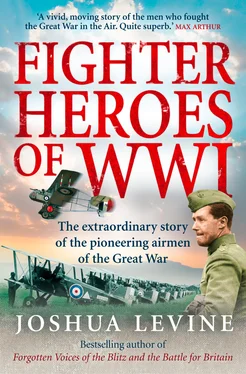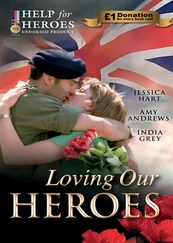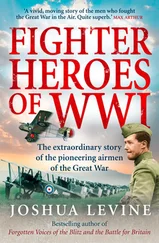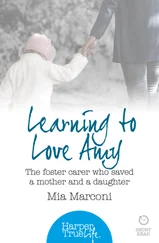Back home, in England, in 1914, I went back to Charterhouse for a term, and took my entrance exam to Trinity, Cambridge. But then, of course, came the outbreak of war. I was in camp with the Charterhouse Officer Training Corps, in Staffordshire, at the time. I went back home in my uniform to Gloucestershire, and people were making a fuss of anybody in uniform, and a woman came up to me at Gloucester Station, and she asked me to hold her baby for a minute, while she went and got something, but she didn’t come back …
I wanted to join up. I’d always been keen on horses, and I thought I’d join the local Gloucestershire Yeomanry, which was one of the very good yeomanry regiments. So, at the age of seventeen, I became a subaltern in the Yeomanry, where I had a glorious two years, training men and horses. I was given a hundred butchers’ boys and grocers’ boys from Gloucester who’d ridden nothing but a bicycle, and a hundred Canadian horses that had never been ridden at all, and I had to put them together and make them into a squadron of cavalry. Which was quite an interesting job, actually. But before long, cavalry weren’t wanted any more and we had to get rid of our horses. I suppose it was one of the most traumatic days that I ever remember, because we all loved our horses, and we had to take them away and load them onto a train and send them off, goodness knows where, after having trained them up for two years. They then said that they were going to give us bicycles but I didn’t really fancy that very much.
I’d met a man quite recently, who’d been flying and he’d been explaining to me how he was cooperating with a new, very secret weapon, called a ‘tank’ and it was the greatest fun. So I went back and told my colonel that I was going to go flying. He was a little bit cross, but I said, no, it’s the thing for me, so off I went. I went to see some people in London, in the War Office. There was a very nice young cavalry officer who was interviewing possible candidates for the Royal Flying Corps. He noted my shoulder straps, and he said, ‘Ah, you’re Gloucester Yeomanry. You ride a horse?’ ‘Yes,’ I said, ‘I do.’ ‘Do you know where the pole star is?’ he asked. ‘Yes,’ I said, ‘I think I could find it.’ ‘You’ll do,’ he said.
British society in 1914, patriotic and obedient, was firmly ordered by class. Frederick Winterbotham represented the next generation of officers and empire builders. Young men like him, and those from every social class for that matter, knew their place. They were born with a role to fulfil, and, when war came, a new and appropriate role was assigned, and carried out unhesitatingly. For all that the new flying services attracted men of originality and disregard for military custom, their originality usually only extended to their immediate world. Larger moral and political conventions remained unchallenged. The structure of the flying services neatly reflected the social order; officers came from one background, the rank and file from another. In general, pilots were officers, while the riggers who tended the airframes, and the fitters who looked after the engines, were in the ranks. Occasionally, however, the social order blurred. Within the squadrons there were a number of sergeant pilots, from humble backgrounds, who lived and messed separately to the officers, but who experienced precisely the same dangers. Among these were men who had learnt to fly in the pre-war pioneering days. Donald Clappen was one of them:
I was always interested in flying. I used to take the aviation journals, Flight and Aeroplane. Then in July 1911, the Gordon Bennett Cup took place at Eastchurch. I was living at Westcliff-on-Sea at the time, and I took an excursion boat across to Sheerness and I saw all the famous pilots flying. The Gordon Bennett Cup was an international affair. Pilots represented their countries. I saw not only my first flying, but also my first crash.
It appears that Gustav Hamel, a famous British pilot, was flying practice laps in a Blériot, but found that his time was slightly slower than that of a rival Nieuport machine. Blériot himself was present, and he decided to cut about a foot off of each wing. This went well. Hamel was faster in his next practice circuit. But in the actual race, he got to the first pylon, overbanked and flew straight into the ground, with the engine running full on. He was thrown twenty-five or thirty yards, rolling over and over. The machine was a total wreck, but Hamel was only badly bruised, and didn’t even break a bone.
It was as big a crash as one could ever wish to see – yet he got up almost unhurt. That made me think that aviation was not quite as dangerous as I had believed. However, everyone thought I was quite mad to want to learn to fly. In fact, so much so, that I hardly told anyone of my interest – not even my own parents. That’s why I started off by getting myself apprenticed to the Chanter School of Flying at Hendon, just as a start. They had an advertisement in one of the aviation journals.
The Chanter School was rather a ropey concern. It had two Blériots and a machine which they were building themselves. They ceased to exist in October or November 1911, by which time I’d learnt to sweep the floor and push the machines about. I then got in touch with the Blériot Aviation Company, also at Hendon, and asked if I could join them as an apprentice, with a view to becoming a flying pupil at a later date.
I joined Blériot in November 1911, and I was just a general dogsbody at first, but I was allowed to fly. Learning was entirely a solo effort. There were no dual-control machines, nor were there any machines that could take up a passenger. At first, the aircraft was raised onto a pedestal, showing what it was like, and the view one would get as a pilot in the flying position. Then one was put into the machine, told to keep straight ahead, towards a tree or something like that on the other side of the aerodrome. One learnt to roll across the ground. From thence, one started by doing short hops, followed by longer hops, until one could fly straight across the other side of the aerodrome. After that, one was able to do half circuits, one to the left and then to the right, and so forth, until one was able to fly in a complete circuit around the aerodrome.
The first time I flew was quite by accident. I was in a machine which was not supposed to fly. It had been detuned. I was rolling across the ground, doing a straight, as I thought, when suddenly I found the ground receding under me. Of course, this was so unexpected that I pushed my stick down and landed with a bit of a crash and found myself with the undercarriage spread all around me and the prop broken. My instructor – Monsieur Salmet – came rushing up to me, ‘Why you fly? Why you fly?’ I had no answer. I didn’t know.
What had happened was that a gust of wind had caught my plane and it had taken off without my expecting it to. In those days, no one ever flew unless it was dead calm. My punishment was that I was not allowed to practise on an aircraft until I had participated in the repair of the machine, which took some months. That put me back quite a lot, but I still qualified for my pilot’s certificate when I turned eighteen. After that, I was made a sort of assistant instructor, but I was also expected to do absolutely everything connected with the running, repairing and mending of the aircraft, tuning up of the engines. I did everything concerned with the maintenance of the machines.
In general, the majority of pupils were army officers, who were learning to fly with a view to joining the Royal Flying Corps, which had started in 1912. There were a few others – some rich people who went on to buy their own aircraft. And most weekends, at Hendon, there were competitions and flying displays. It was quite a fashionable affair, almost like Ascot, with people flocking down to see the flying.
Читать дальше












